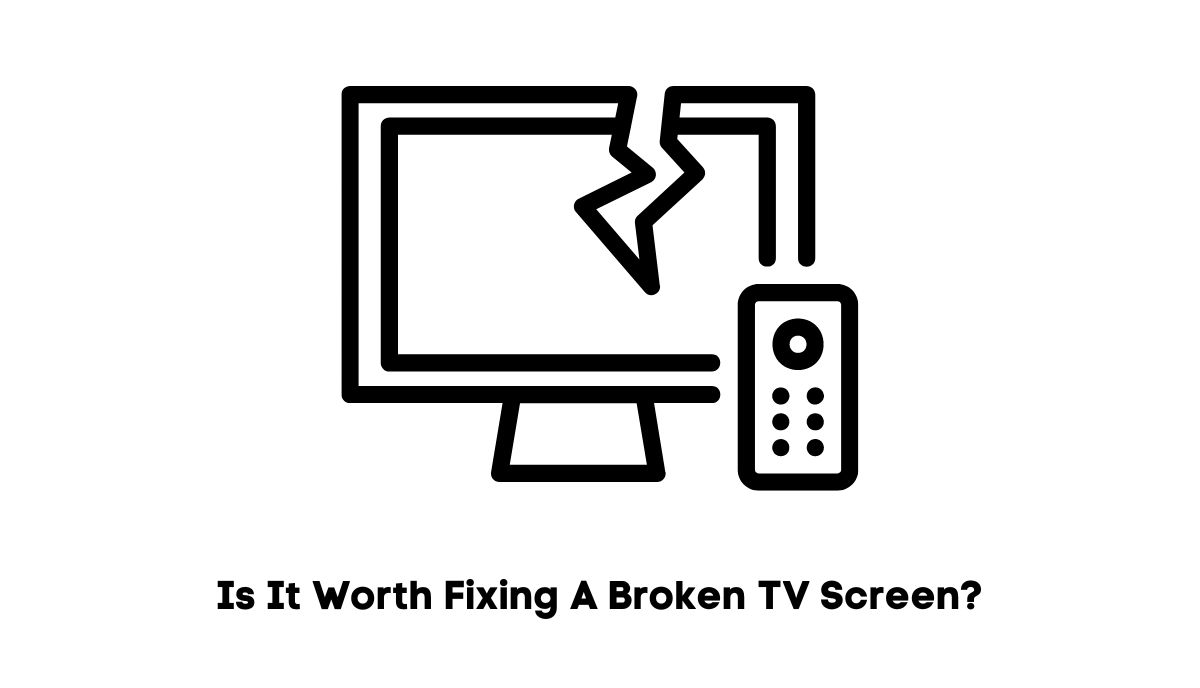When a TV screen breaks, you can either fix or replace it. But which option makes more sense? The guide below will tell you.
1). Assessing The Damage
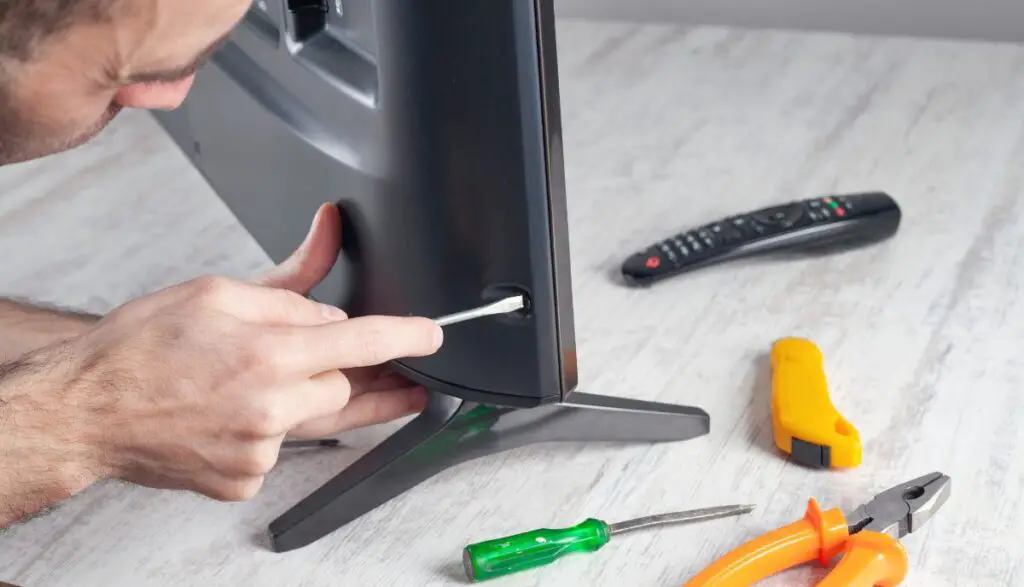
This is the starting point. Broken screens are not all the same. The term ‘Broken Screen’ is broad. It has numerous meanings. An inspection will reveal one or more of the following:
- Lines
While vertical, horizontal, or diagonal lines can appear because of a hardware or software defect, you cannot rule out a damaged screen.
- Cracks
Cracks are the biggest concern. But before you panic, identify the type and size. Are you looking at wide fractures, hairline cracks, or thin scratches on the screen’s surface? You can feel some cracks if you move your hand across the screen.
Others exist internally. You can’t feel them even when you touch the screen. But they are visible enough to disrupt your viewing experience.
- Spots
Spots can appear because of microscopic fractures that allow the liquid crystal to leak. You can create spots by striking the screen, pressing your finger against the surface, or squeezing the TV tightly while moving it from one location to another.
- Blotches
Blotches are similar to spots. They appear because of an internal leak. Blotches are just as concerning as spots because they point to internal damage as opposed to superficial fractures.
- Discoloration
Have you noticed that sections of the screen are brighter, darker, or more distorted than others? That happens when foreign substances, such as dust and moisture, infiltrate the display panel.
- Fuzzy Images
A fuzzy screen is not necessarily broken. It can point to a poor signal originating from damaged wiring. Try adjusting the resolution. If you see bars and lines, look for magnetic interference.
If you see an image that won’t disappear even when you turn the TV off, you can blame image retention or screen burn-in. This happens when you leave a static image on the screen for an extended period. Again, the screen is not necessarily broken.
If you fail to identify tangible signs of damage, Sony recommends a power cycle. Unplug the TV, wait a few minutes, and reconnect it. If the problem persists, you need an expert to troubleshoot variables such as signal strength, loose connections, damaged wiring, and poor settings.
2). Cost Of Repair
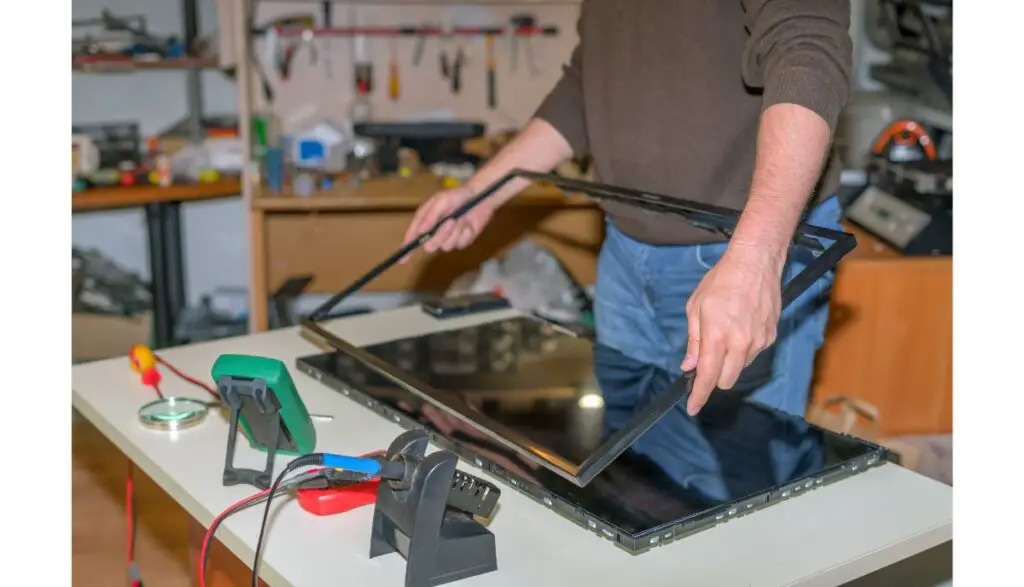
This is the deciding factor for most people. They will do whatever is cheapest. According to this Wrap Business Report, people in the UK choose to replace their TVs because the repair cost is too high. TV screen repair costs will vary depending on the following:
- Labor Fees
Technicians won’t fix your broken screen for free. Expect them to charge $60 – $125 per hour, depending on the location. The longer it takes to fix a broken screen, the more you will pay. Technicians that make home visits will charge a higher rate. You’re better off taking the TV to a repair shop.
Even if they have a flat fee, some technicians charge a diagnostic fee. You may pay $40 – $100 for the technician to tell you what went wrong. The cost of fixing the problem is separate.
- Severity Of The Damage
What are you fixing? Cracks and tears are relatively straightforward. But what if the screen went dark because the TV fell? The technician could charge you $100 – $150 to repair a broken backlight.
Or maybe you need a new control board, in which case repair costs will exceed $200. You may notice distortion because of a faulty HDMI port, which an expert may repair for $350 if the problem includes a damaged circuit board.
What about the inverter? It runs the backlight. You must replace it once it fails. Don’t forget about the TV panel. Some people think the choice is between fixing the broken screen or replacing the entire television set. But you can also replace the screen without buying a new TV.
You need a technician to perform this task because it involves opening the TV and removing the old display panel before inserting the replacement.
- The Type of TV
Most TVs will cost you $100 to $400 to repair, regardless of the type. However, LCDs and LEDs are the cheapest to fix because their parts are easily accessible. Plasma TVs are a different case. According to how-to-geek, manufacturers stopped making them in 2014 in favor of LCD, LED, and OLED.
This makes plasma TVs more expensive to repair because replacement parts are difficult to come by. The same challenge arises for newer smart TVs, particularly products from emerging brands with a smaller market base. This is why tech-savvy individuals prioritize common brands with easily accessible parts.
3). TV Value And Age

On its own, the repair costs won’t tell you anything. You must compare them to the value and age of the broken TV:
- Why The Age Matters?
According to USA Today, LEDs have an average lifespan of five to eight years. But why does that matter? If you have a 6-month-old TV, repairs make more sense because the TV will serve you for seven years or longer.
Besides the broken screen, every other component is brand-new and in perfect shape. A 5-year-old TV, on the other hand, should be replaced. Think about. The device is fast approaching the end of its life.
Why fix the screen now only to replace the TV in one or two years when it fails? Repairs are unnecessary for old and worn-out appliances. Keep in mind that prices for electronic devices are continuously declining.
A high-end TV you bought for $800 six years ago will cost you $400 today. You can get a replacement that exceeds your current TV’s specs despite being significantly cheaper.
- Why The Value Matters?
The TV’s value and the repair costs go hand in hand. Commonsense will tell you to replace any appliance whose repair costs are more than 50 percent of the appliance’s value. In this case, screens are usually the most valuable component of a TV.
A replacement screen for a $1000 TV will cost you $800. Some replacement screens are more expensive than the TV. This is why laypeople generally prefer to replace the TV. Even when the TV is new, replacement is more cost-effective than repairs.
If you’re struggling to make this decision, Consumer Reports has a tool that tells you whether to repair or replace an appliance based on age, original cost, and repair costs.
4). TV Warranty Coverage

A warranty is not insurance. It covers factory defects, errors, and any other fault the manufacturer inadvertently caused. You can also request a refund or replacement if the TV screen cracks during transit.
However, warranties don’t cover accidents. Any defect that develops because of your actions or the actions of other people is yours to fix. If you want coverage for accidental damage, Upsie recommends a TV protection plan. It provides the same coverage as a warranty but includes accidents.
5). DIY VS Professional TV Repair
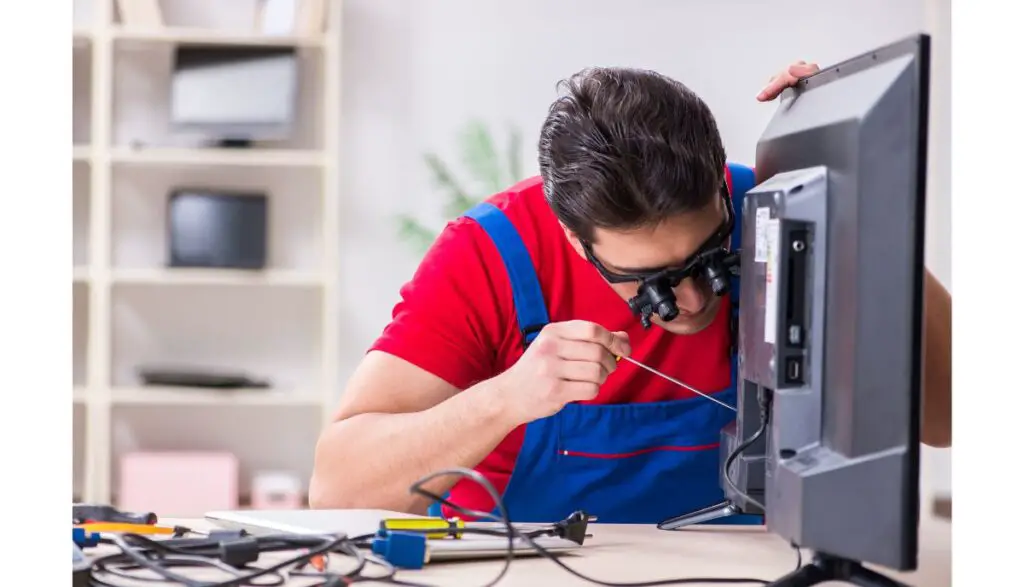
Naturally, fixing the TV screen yourself is cheaper than hiring a professional. You will only pay the price for the replacement parts. On the other hand, a technician’s labor fees can easily exceed the cost of a new screen, depending on the complexity of the TV’s design.
That said, TV screens are incredibly complicated. According to Angi, you need Advanced-level knowledge to fix one. Keep the following in mind:
- If your warranty is still in effect and promises free or cheap repairs, don’t tamper with the TV. Opening the device will immediately void the warranty. Confirm that your warranty has either expired or cannot help you before proceeding.
- Don’t attempt to fix a broken screen unless you’re prepared to replace the TV. A DIY project should be a last resort. Otherwise, the chances of a layperson doing more damage to the TV are pretty high.
6). Does Repairing The Broken Screen Hold Additional Value Beyond Its Functional Aspects?
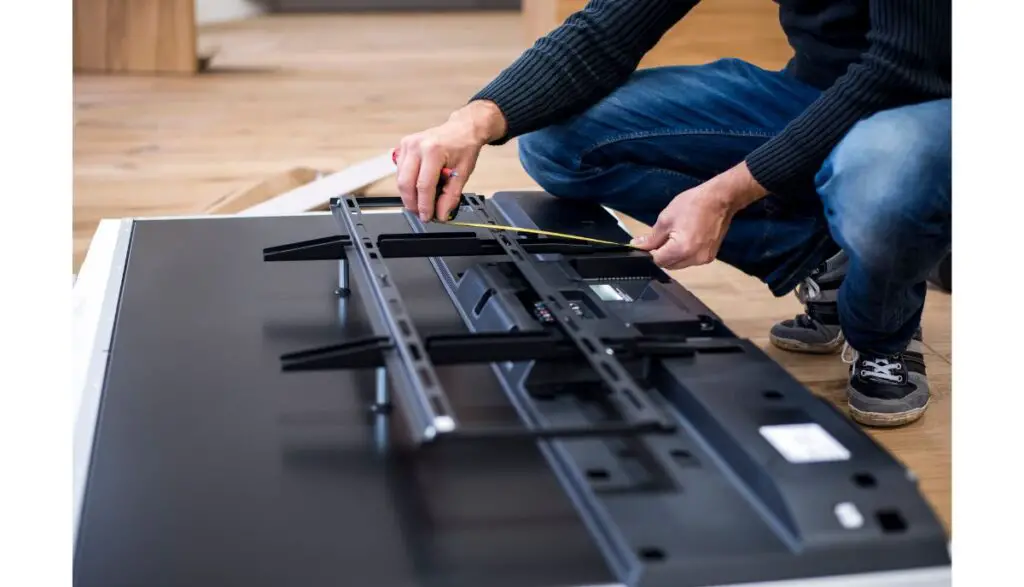
Fixing a broken screen has no significant value, excluding the money you hope to save. You can lower the repair costs drastically by fixing the screen yourself. This is cheaper than hiring an expert or replacing the TV.
However, beyond the cost-saving opportunity, you are better off buying a new display panel or TV. You can’t trust a screen with repaired cracks to stand the test of time. The fractures may grow in size over the weeks and months until the screen fails altogether.
7). TV Resale Value
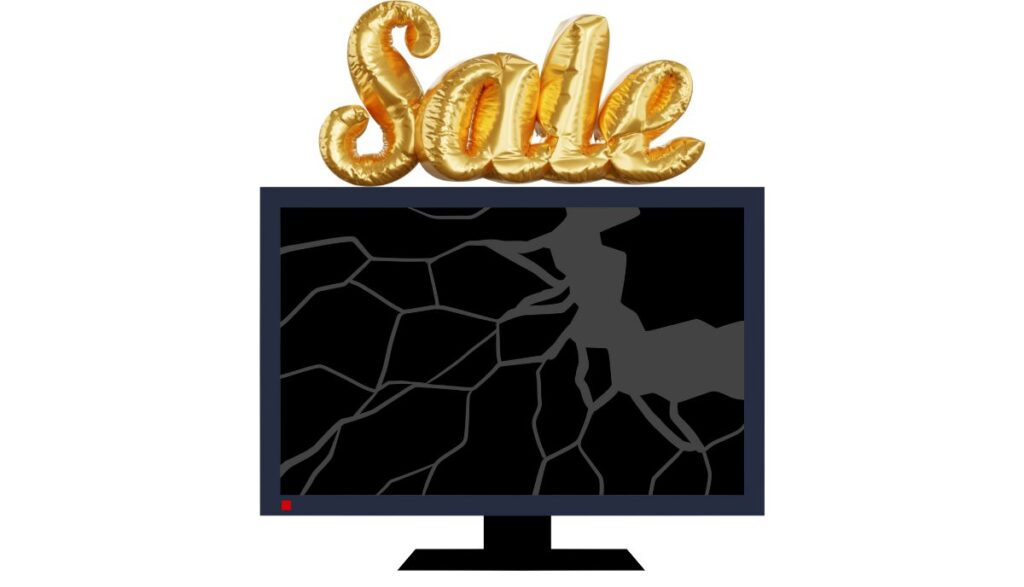
You can sell a TV with a broken screen. Technicians want the TV’s components, including computer chips, circuit boards, receivers, speakers, housing, and more. But don’t expect a lot of money.
You will never recoup even half of your original investment. Why? Because over 90 percent of the TV’s value is in the screen. Without it, you would be lucky to get $100. But that shouldn’t stop you from reselling the TV, especially if the damage doesn’t prevent the user from seeing the images on the screen.
You may secure a decent price from a second-hand shop or anyone with heavy financial constraints searching for a cheap TV.

